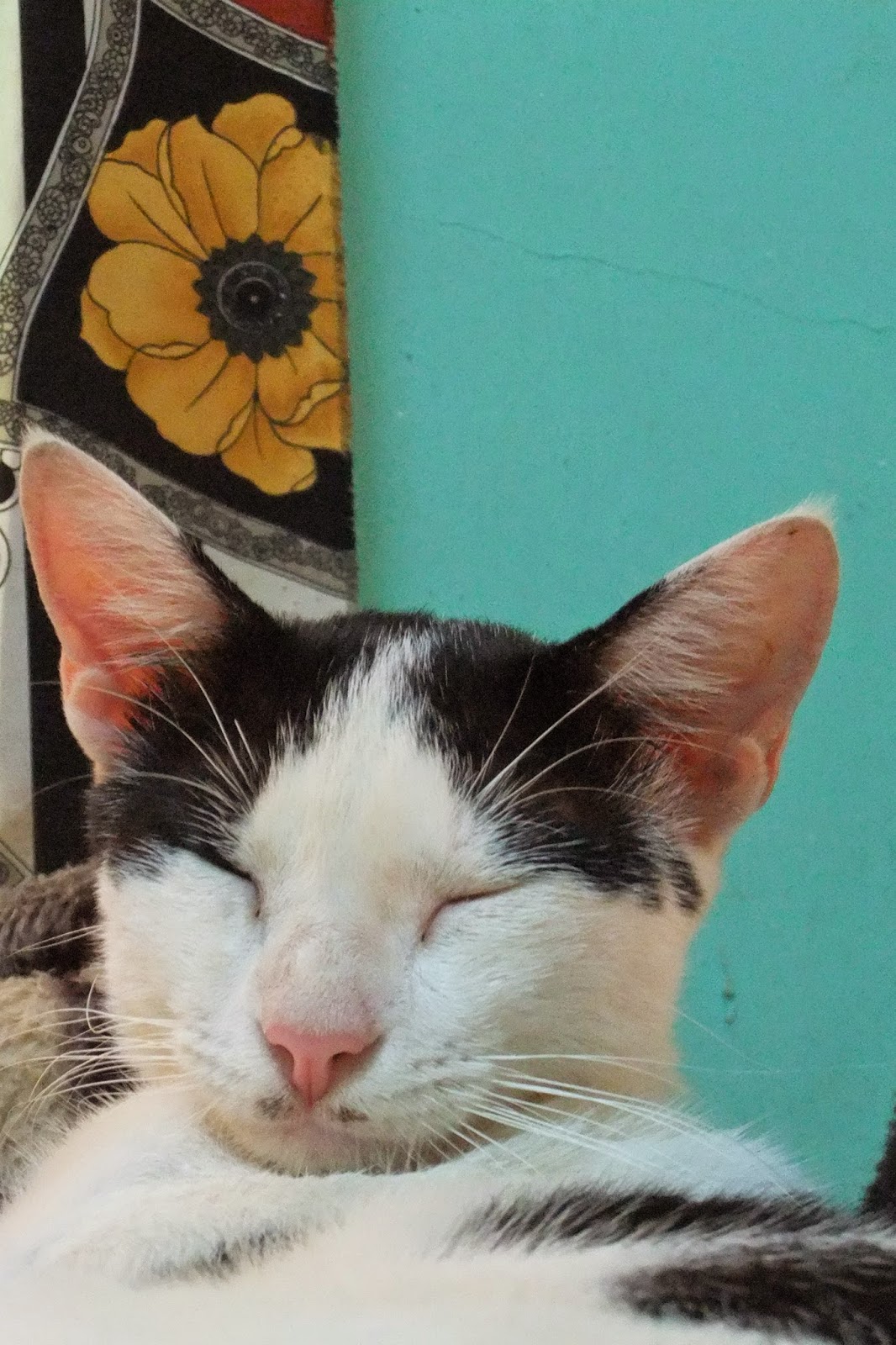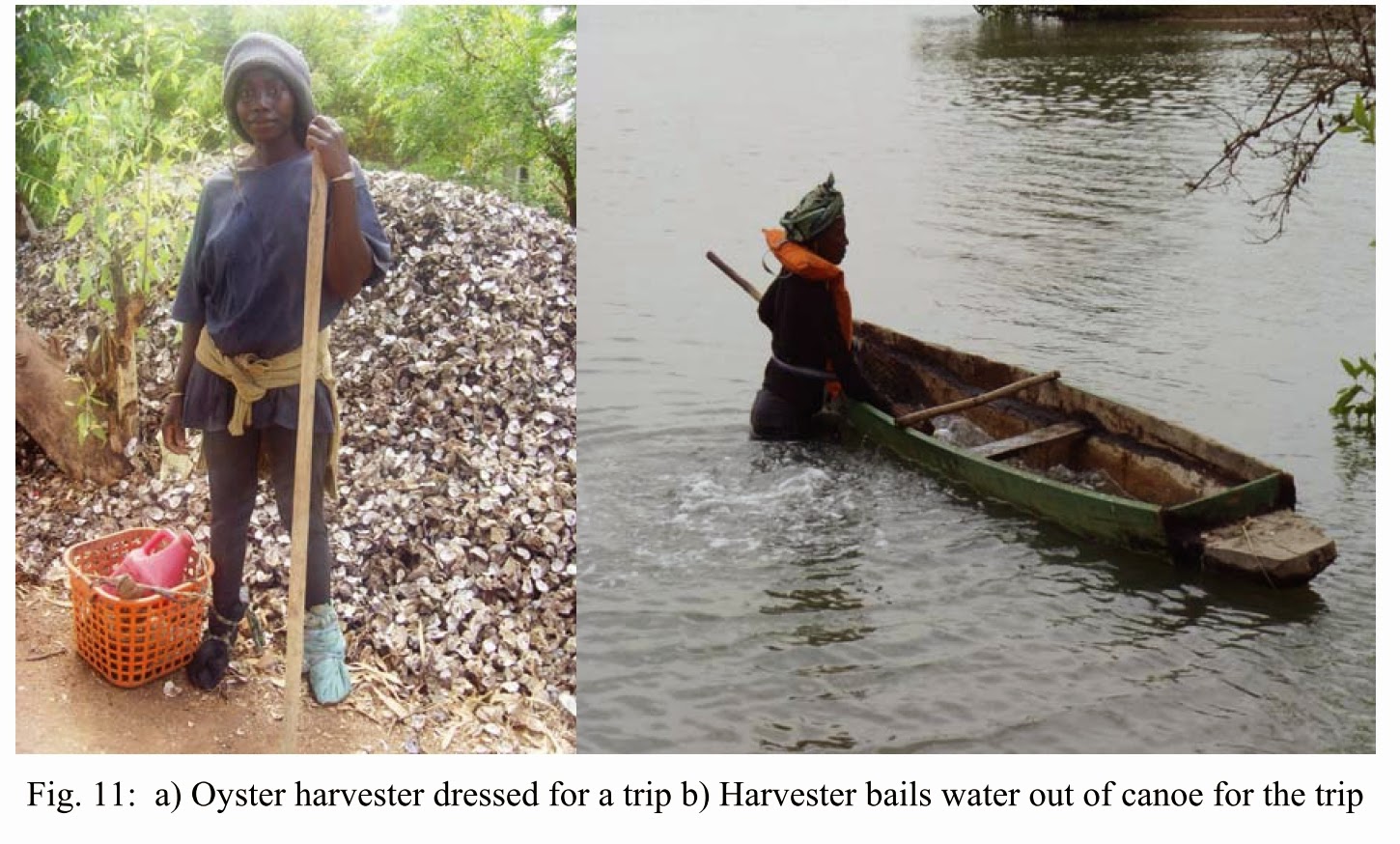故事從2010年的三月開始,美國和平工作團 Peach Corp的朋友說,他們家有新的小貓出生,問我們要不要養。剛好那時候我們家老鼠為患,每天晚上都在屋頂上開轟趴,就想說養貓驅鼠。後來他們帶兩隻貓給我們,偶爾當他們要去首都的時候,順便在我們這寄養他們家的貓。這兩隻貓,分別叫做Lunch and Dinner。台灣人在那一帶還蠻有名的,特別是某位什麼都吃的技師來了之後....因此女傭Aja 聽到這名字,還以為我們真的要吃了他們。雖然有取名字,但我常常都搞混,後來直接都叫他們阿喵。
阿喵他們這樣也陪了我們在SAPU一起生活,很幸運的雖然他們常跑戶外,但卻沒有什麼跳蚤,所以他們就可以自由進出室內(好啦,至少我房間)。養了貓之後,除了解決老鼠的問題,還可以幫忙吃魚頭,中午休息的時候,負責給大家把玩(Bon先生表示:..),他們還是愛跟貓,去種菜要跟、打網球要跟、連晚上去技師家抬槓都要跟。很遺憾的,我們在SAPU的時光有限,後來離開後,他們也好像變回野貓,最後的消息是,好像當媽媽了。
阿喵們,謝謝你們給我帶來的美好時光
 |
| 這故事發生的地方,現在應該已經不在了 |
 |
| 2010年三月,他們來到SAPU |
 |
| 從此之後,就有人等我們回家了 |
 |
| 進門先洗澡! |
 |
| 洗完澡,在腳踏車下再清理一下 |
 |
| 魚頭就交給我們負責吧! |
 |
| 有他們之後,原本猖獗的老鼠馬上銷聲匿跡 |
 |
| 偶爾也會幫忙庭園工作 |
 |
| 挖土順便施肥.. |
 |
| 小心! 獅子來襲! |
 |
| 新品種的盆栽: 貓花 |
 |
| 開起花來長這樣 |
 |
| 偶爾爬上屋頂找找壁虎的麻煩 |
 |
| 芒果樹也是勢力範圍 |
 |
| 執行午間勤務中 |
 |
| 工作累了,小睡一下的Lunch and Dinner |
 |
| 睡到舌頭都露出來 |
 |
| 小心! 甘比亞食人貓! |
 |
| 在人類肚上比手勢 |
 |
| 長大改調曾專家的Dinner |
 |
| 想要當蜘蛛貓 |
 |
| 結果被門卡住出不來.. |
 |
| 躲在椅子縫隙,奇襲照相機! |
 |
| 偽文藝風標題: 那人、那床、那貓 |
 |
| 我幫你熱床 |
 |
| 小事一樁,不用謝了 |
 |
| 某天人類在庭院烤肉 |
 |
| 肉烤好了再叫我 |
 |
| 肉還沒好嗎? |
 |
| Lunch and Dinner 的妹妹,可惜要離開,沒辦法再養貓了 |
 |
| 大家再見啦! |












